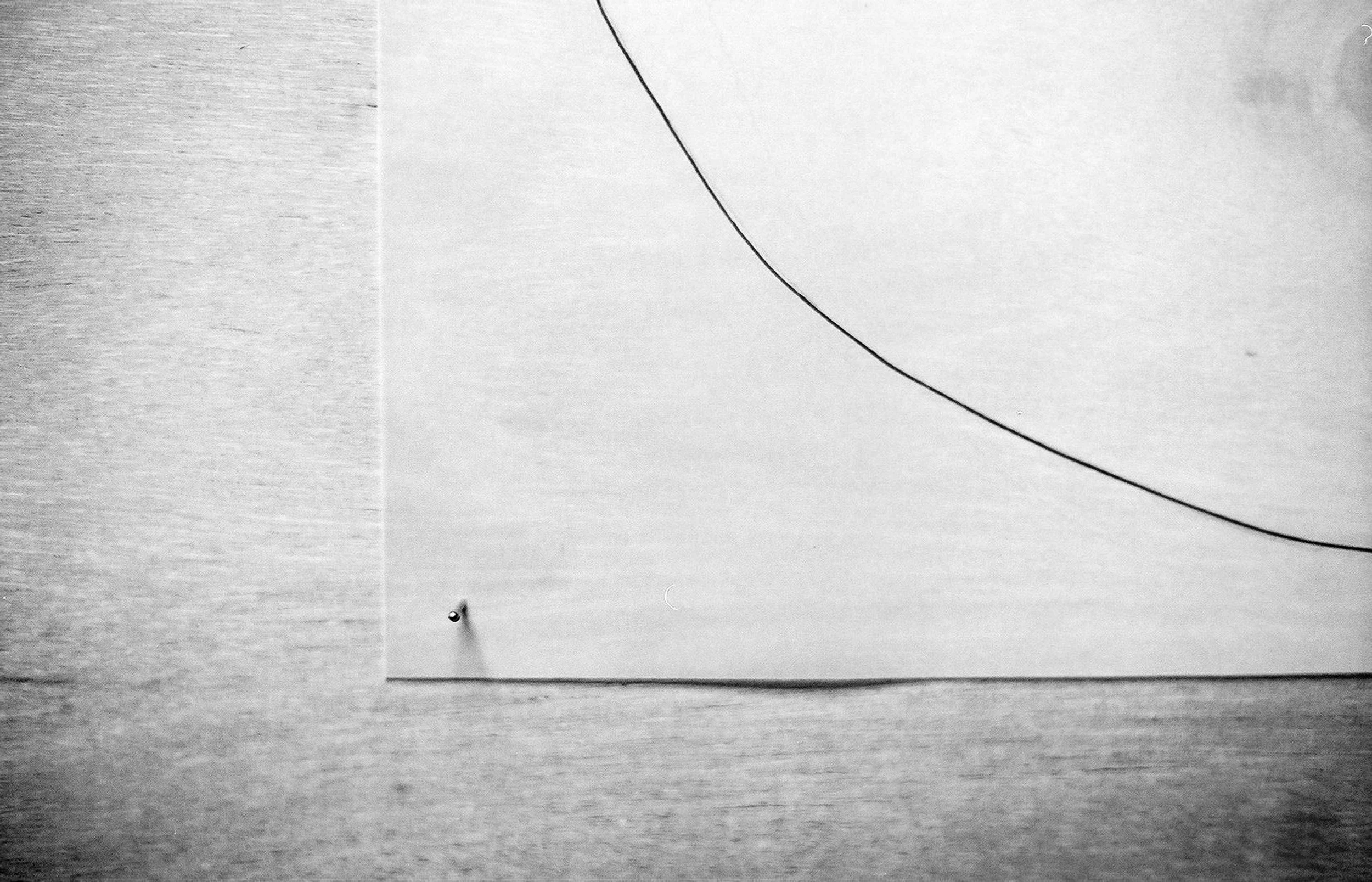We are Both Imagining Things
We are Both Imagining Things
By
G.Alfonso Nunez
Kalli Omarsonn’s artwork poses an initial question for the fellow observer. If we are imagining something, what is it? We are both imagining things (2008) is presented as a twofold artwork. The work at the House Gallery is shown in conjunction with another piece displayed at Camberwell College of Arts; both objects share the same puzzling name.The artwork shown at Camberwell is depicted on the cover of this publication,while my text concerns its counterpart,depicted here to the right. We are both imagining things is composed of an oval shaped drawing, crudely outlined on semi transparent paper and hung by four nails on a simple wood board.The simplicity of this object only reinforces its questioning nature.What is it trying to say to us? Between the wood, the paper and the drawing only one thing is clear: the paper.Influenced by the drawing,our attention is focused at the center. There lays an empty space,filled by wood as seen through paper.The wood itself cannot be properly seen because,as it turns out,not even the paper is totally transparent.When seen through lenses delimited by ink and composed of cellulose, the wood appears as a pale and homogeneous surface.
In his performative and photographic work Roots (2004),a certain kind of confusion is also present.Yet the manner in which this confusion is present is completely unexpected. In his native Iceland, over a number of years the artist received and collected letters and bulletins from a small fishing village. These concerned a supposed common heritage, which the artist over time became fond of. Triggered by celebrations at the village, Kalli traveled to that space with the intention of rediscovering his supposed roots,and himself in the process.His only means of documentation were eight frames in his photographic camera. The result is a collection of photographs that show nothing or nowhere, moments of pure alienation, where meaning is very scarce indeed.There are empty beds,empty walls,and empty buses.The camera does not actively point at a thing;instead,it just looks. But one should not misread this scarcity. There is no space for nihilism in Kalli’s production. Neither empty buses nor empty circles matter. It is not what you look at, but how you look. Insect, Fishing Boat, Iron Lung (2001), a work considered seminal by its author, places an emphasis on interpretative questions. Here Kalli uses the same transparent paper to draw an insect, a fishing boat and an iron lung on alternating sheets.The drawings, visual representations of three concepts, are shuffled to create new bodies, animals or machines.When layered on top of each other, each loses its characteristic and unique position in the order of things. Finally there is no more insect, boat or iron lung.All signs are recombined to created a new kind of object.
Likewise, We are both imagining things and Roots also bear the question of disappearance and filtering.Talking specifically about Roots,this lost meaning is inherited from the bizarre nature of its initial circumstances.The search for an identity not related to your own only leads to a state of isolation, described by the artist as ‘having been someone else-somewhere else’. In this work Kalli does not point the camera with the intention of documenting an actual physical space.The experience of being someone else - somewhere else is his main anxiety. Finally, what else could be that thing which we are imagining? In reality,the question itself is rhetorical.When faced by an empty circular drawing one might assume that this emptiness is the thing in question;an empty space to be filled with meaning, and therefore with things. In the context of We are both imagining things,this act of ascribing meaning to an empty space is indeed important but, as I would like to show, it is not pivotal. The transparent surface of that paper is in fact a lens by which observers unexpectedly find their vision limited. There is neither wood nor paper at the centre but rather an impression or imagination of it.Acting through this paper barrier,We are both imagining things calls into question personal or cultural filters which become involuntary calls to action for those, including the artist himself, who are faced by new situations. Similar to Borges’ imaginary creatures, Kalli’s objects are Hellenistic Chimeras and Nordic Norns, constantly shifting between different forms but, nevertheless,decisive to one’s future experience.
G.Alfonso Nunez
